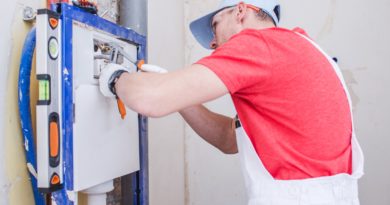What to Know About Metal Stripping
The term metal stripping refers to the process of removing surface coatings such as paint, varnish, and even rust from metal. There are various types, such as chemical stripping, abrasive blasting, thermal stripping, and laser stripping. Each type serves a different purpose.
Chemical Stripping
As its name implies, this type of metal stripping relies on chemicals to do the work of removing stubborn coatings. Although it’s very effective, toxic fumes may make it imperative to wear protective equipment and ensure proper ventilation.
Abrasive Blasting
Otherwise known as sandblasting, abrasive blasting involves using a high-pressure system to remove coatings from metal surfaces.
Thermal Stripping
Thermal stripping uses heat to break down the organic components of the coatings in a process known as thermal pyrolysis. Because of the extreme high temperatures necessary with this procedure, those who use it must be highly trained and practice the utmost caution.
Laser Stripping
Laser stripping is becoming increasingly popular for industrial uses, particular when high-precision functionality is desired. It works by using concentrated beams of light to break down coatings through vaporization without affecting the underlying metal.
Industries That Use Metal Stripping
Metal stripping is used by a wide range of industries where metal surfaces need to be repaired, restored, or modified. The industries that rely on this critical process to enhance product quality, improve safety, and extend the lifespan of metal components include the following:
Automotive
From restoring vintage vehicles to preparing the surfaces of new cars for their first coats of paint, metal stripping is an integral component of automobile repair and manufacturing.
Aerospace
The aerospace industry has stringent requirements for metal parts, which typically need to be able to withstand extreme conditions. Stripping is used to remove old coatings and prepare surfaces for the application of specialized materials designed to resist high temperatures and corrosion.
Construction
Metal stripping is frequently used in the construction industry to prepare structural steel for use in building.
Manufacturing
Manufacturing sectors that commonly utilize stripping technology include machinery, tools, and equipment production.
Marine
Marine vessels and underwater structures have to be able to withstand conditions that cause corrosion. Stripping the metal removes old coatings and prepares surfaces for new, corrosion-resistant layers, extending the life of marine infrastructure.
Electronics and Semiconductors
Although it’s less commonly used than in the industries listed above, metal stripping is sometimes used in the electronics industry to remove thin metallic layers during the manufacturing process. This requires a high level or precision that typically needs specialized techniques.
Art and Antique Restoration
On a smaller scale, metal stripping is used to restore art and antique items. This is a highly specialized application, requiring great care to ensure that the integrity of the piece is not compromised during the restoration process.
Safety Matters in Metal Stripping
Given the involvement of potentially hazardous materials and methods, safety is of paramount concern when it comes to metal stripping. Whether the process uses chemical solvents, or high-temperature techniques, appropriate safety measures must be in place. These may include proper ventilation, protective gear such as masks, goggles, and specialized gloves and clothing. Compliance with safety measures helps ensure that stripping is performed effectively and efficiently without harming human health or the environment.




